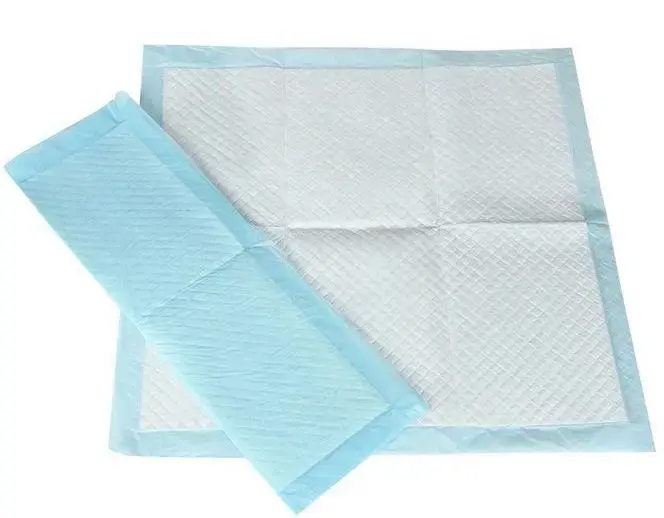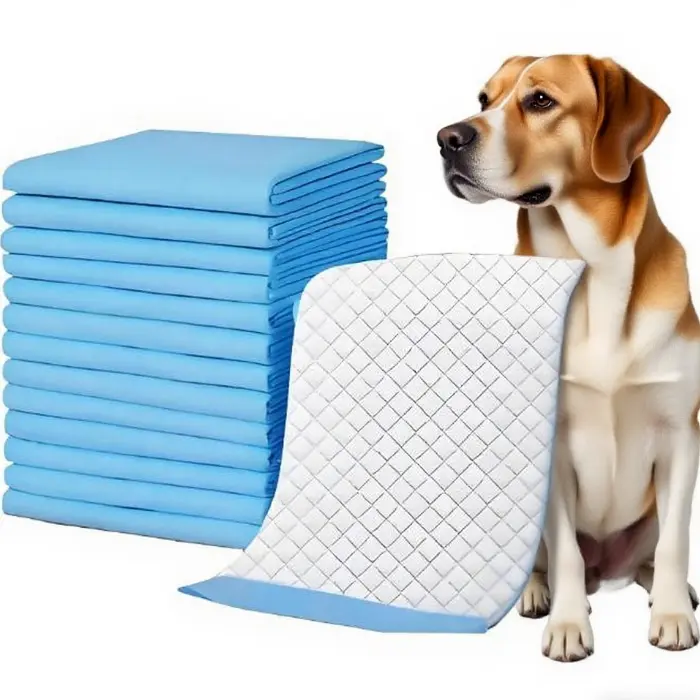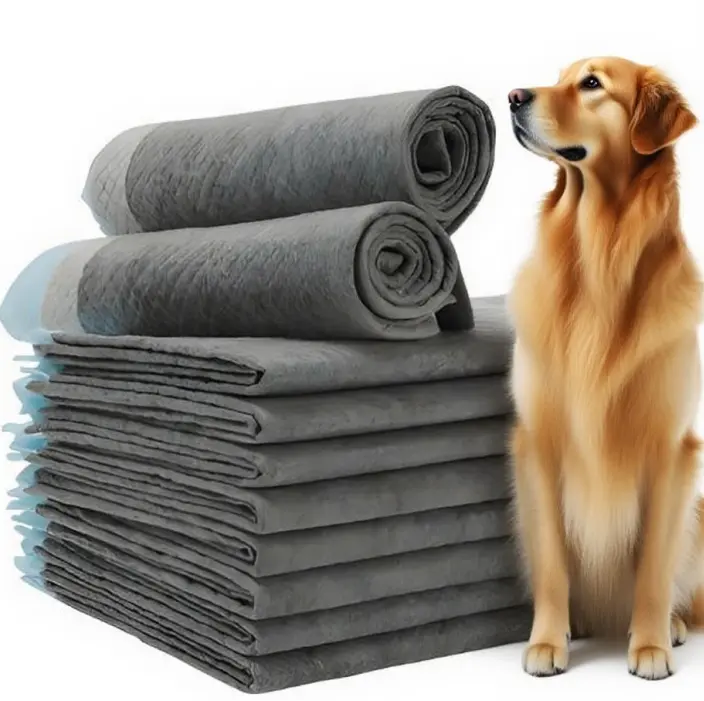The structure of the dog urine pad
1. Surface layer (layer in contact with pet skin):
Material: mostly non-woven fabrics or PE perforated films (polyethylene films).
Function: soft and skin-friendly, reducing irritation to pet claws; the air-permeable hole design can quickly
penetrate urine and prevent reverse osmosis.
2. Water-absorbing layer (core layer):
Material: polymer water-absorbing resin (SAP, Super Absorbent Polymer) mixed with wood pulp.
Function: SAP swells when exposed to water and can absorb liquid dozens or even hundreds of times
its own weight, quickly locking urine; wood pulp provides structural support and accelerates diffusion.
3. Leak-proof layer (middle isolation layer):
Material: PE film or non-woven composite film.
Function: Prevent urine absorbed by the water-absorbing layer from leaking to the bottom, protecting
the floor or pet mat.
4. Bottom layer (layer in contact with the ground):
Material: non-slip non-woven fabric or PE film with adhesive backing.
Function: The non-slip design ensures that the urine pad is fixed and does not move; the adhesive backing
of some products can be directly attached to the ground to prevent pets from scratching and shifting.
5. Special functional layer (part of the product):
Defecation attractant layer: add pet pheromones (such as pheromones) to attract pets to actively
defecate on the urine pad.
Deodorant layer: add activated carbon, tea polyphenols and other ingredients to neutralize the odor of urine.
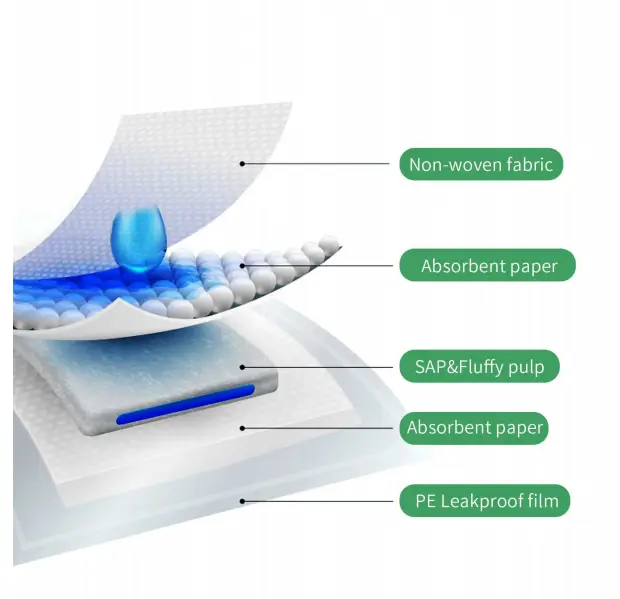
The role of dog urine pads
1. Hygienic cleaning:
Quickly absorb urine and lock water to prevent urine from spreading and contaminating floors and furniture.
The leak-proof layer prevents leakage and reduces cleaning workload.
2. Fixed-point training:
By guiding pets to defecate on the urine pad, help establish the habit of "fixed-point toileting" (especially suitable
for puppies, elderly dogs or pets with limited mobility).
3. Emergency and convenience:
Provide temporary toileting solutions in bad weather (such as heavy rain, high temperature) or when the owner is out.
Suitable for scenes where it is inconvenient to walk the dog outdoors, such as apartments and high-rise residential buildings.
4. Health monitoring:
Observing the color, amount, and smell of urine/feces on the urine pad can help determine whether the
pet is dehydrated or sick (such as diabetes, kidney disease).
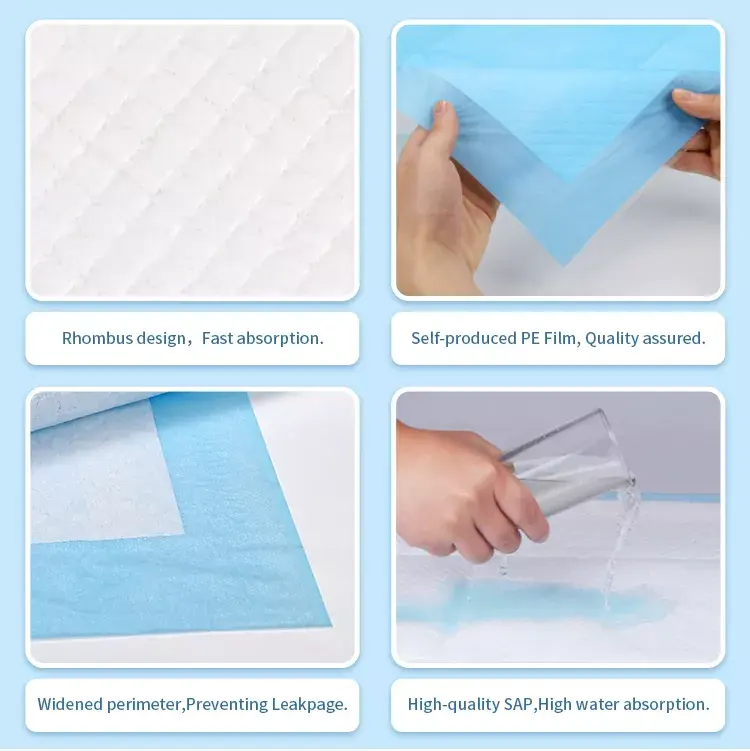
How to use dog urine pads
Correct use of dog urine pads can maximize their effectiveness. The specific steps are as follows:
1. Choose a suitable location
Fixed area: Choose a location that is easy for pets to reach and well ventilated (such as a balcony, bathroom,
or next to a pet nest), and avoid frequent changes of location that interfere with pet habits.
Stay away from the food bowl: Pets instinctively reject defecation in the eating area, so the urine pad needs
to be kept away from the food bowl.
2. Lay the urine pad
Lay it flat: fully unfold the urine pad, with the bottom layer (non-slip surface) close to the ground to avoid
wrinkles or curling.
Coverage: Adjust the size according to the size of the pet (small size for puppies, large size or multiple
sheets for large dogs).
3. Guide the pet to use
Initial training:
When the pet shows signs of defecation (such as turning in circles, sniffing, and lifting its buttocks), hold it on the
urine pad and guide it with commands such as "pee/poop".
After defecation, immediately give snacks or verbal praise to strengthen positive associations.
Correction:
If the pet urinates in the wrong place, the contaminated area needs to be cleaned thoroughly (use enzyme cleaner
to remove odor) to avoid residual smell attracting repeated excretion.
Do not punish pets, which may cause fear or resistance.
4. Replacement and cleaning
Replacement frequency:
Puppies (2-6 months old): Change every 2-3 hours (or adjust according to urine volume).
Adult dogs: 1-2 times a day, and one can be left overnight at night.
Feces must be cleaned immediately and replaced in time after urine absorption is saturated.
Cleaning method:
Fold the urine pad to wrap the excrement and discard it in the trash can (avoid flushing it into the toilet, which may clog it).
Wipe the ground with pet-specific disinfectant or white vinegar water (1:1 dilution) to remove residual odor.
5. Precautions
Cannot replace dog walking: urine pads are only used as supplementary tools. Pets still need to go out and
socialize every day to meet their exercise and sniffing needs.
Choose safe materials: Prefer urine pads without fluorescent agents and irritating odors to avoid allergies
after pets come into contact with them.
Special scenario adjustments:
During female dog's estrus period: urine pads can be stacked to increase absorption.
Long-term hospitalization/travel: carry urine pads to help pets adapt to the new environment.
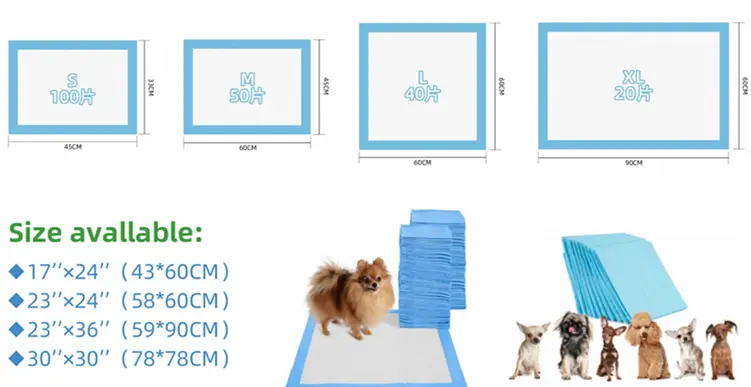
Summary
The dog urine pad achieves efficient water absorption, leak prevention and deodorization through a multi-layer
structure design, and is a convenient tool for modern pet-raising families to manage pet excretion.
Correct use requires a combination of fixed-point training, timely replacement and positive guidance, which
can not only keep the home clean, but also improve the comfort of pet life.
